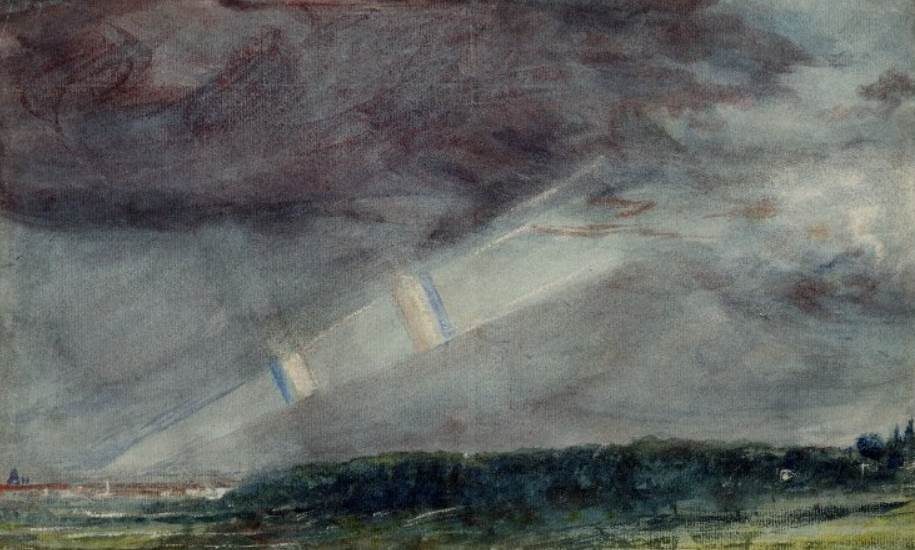The British Museum is home to one of the most extensive collections of artifacts in the world from all periods in human history.
The museum was established from the collection of Irish naturalist Sir Hans Sloane in the year 1753 and continuously grew over the centuries.
The first exhibition was housed at the Montagu House in the year 1759 which was located on the site of the current museum in Bloomsbury, just west of London’s historical heart.
Today, the British Museum houses an incredible collection of 8 million objects of which many are housed in the 94 galleries that cover a floor area of 75,000 square meters (807,000 square feet).
One of the departments holds prints and drawings which often served as preparatory drawings of world-famous paintings.
In this article, you’ll discover some of the most famous prints and drawings at the British Museum.
1. Portrait of a Young Woman – Rogier van der Weyden
- Date created: 1440
- Dimensions: 16.6 x 11.6 centimeters (6.53 x 4.56 inches)
Rogier van der Weyden (1399-1464) was one of the most influential Early Netherlandish painters of the 15th century. These artists are also known as the Flemish Primitives and they played a major role in the development of the northern Renaissance.
Just like his colleague Jan van Eyck (1390-1441), he became the court painter of the Duke of Burgundy and earned commissions from rich patrons all around Europe. His paintings mainly consisted of religious works. This Portrait of a Young Woman is an incredible preparatory drawing for one of these religious artworks.

2. Allegory of Abundance – Sandro Botticelli
- Date created: 1480-1485
- Dimensions: 31.7 x 25.3 centimeters (12.48 x 9.96 inches)
Allegory of Abundance is considered to be one of the most advanced preparatory drawings by Sandro Botticelli (1445-1510). He was a Renaissance artist who is world-famous for his paintings called “The Birth of Venus” and “Primavera,” two of the ultimate Renaissance masterpieces.
It’s assumed that this particular drawing was a study of the figure of Flora in his Primavera painting. The level of details included, especially with the woman’s dress that accentuates his figures, is a testimony to the amount of work that went into these artworks.
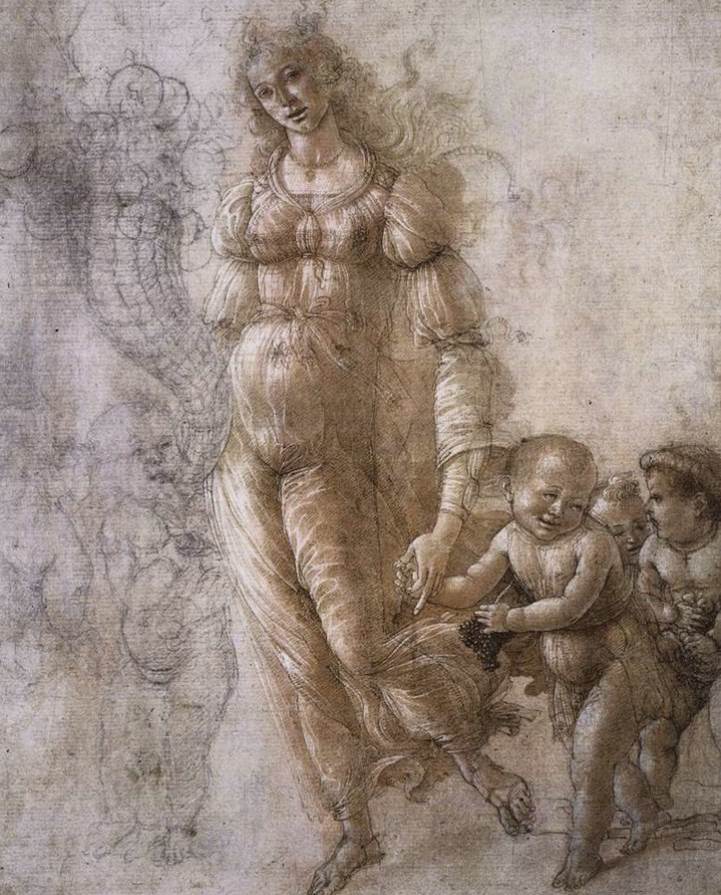
3. Study for The Burlington House Cartoon – Leonardo da Vinci
- Date created: 1503-1510
- Dimensions: 26 x 19.7 centimeters (10.23 x 7.75 inches)
The drawings of the Virgin and Child with Saint Anne and Saint John the Baptist are assumed to be preparatory drawings for another drawing by Leonardo da Vinci (1452-1519) referred to as “The Burlington House Cartoon.” This charcoal drawing is part of the collection of the National Gallery in London.
What’s remarkable is that The Burlington Cartoon is also considered to be a study, but no painting by the Italian artist exists that resembles it. It’s also uncertain when he completed both works which might explain why he didn’t even start the presumed painting.
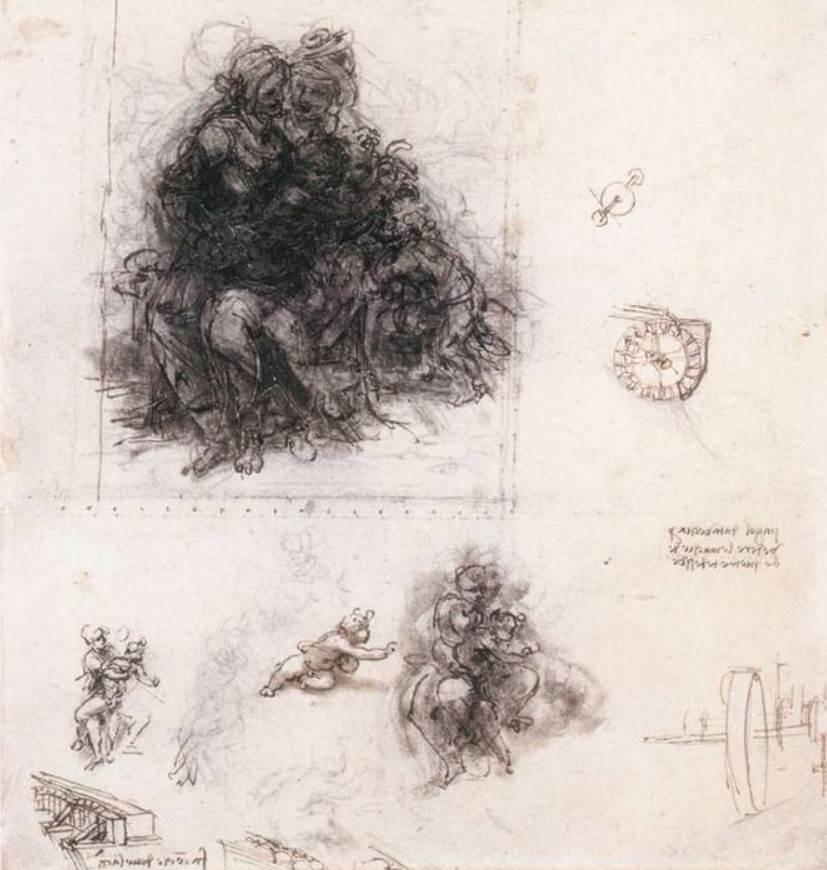
4. Study of Heads, Mother, and Child – Raphael
- Date created: 1509-1511
- Dimensions: 14.3 x 11 centimeters (5.62 x 4.33 inches)
The study of Heads, Mother, and Child, is a drawing by Raphael (1483-1520), the master of the High Renaissance. He produced a large number of Madonna paintings including her infant Jesus Christ and this is one of the studies.
The artist attempted to draw the mother as she is staring downward toward her laughing child. It’s one of these artworks that emphasize the talent that an artist like Raphael had and he was one of the most sought-after artists in the early 16th century.
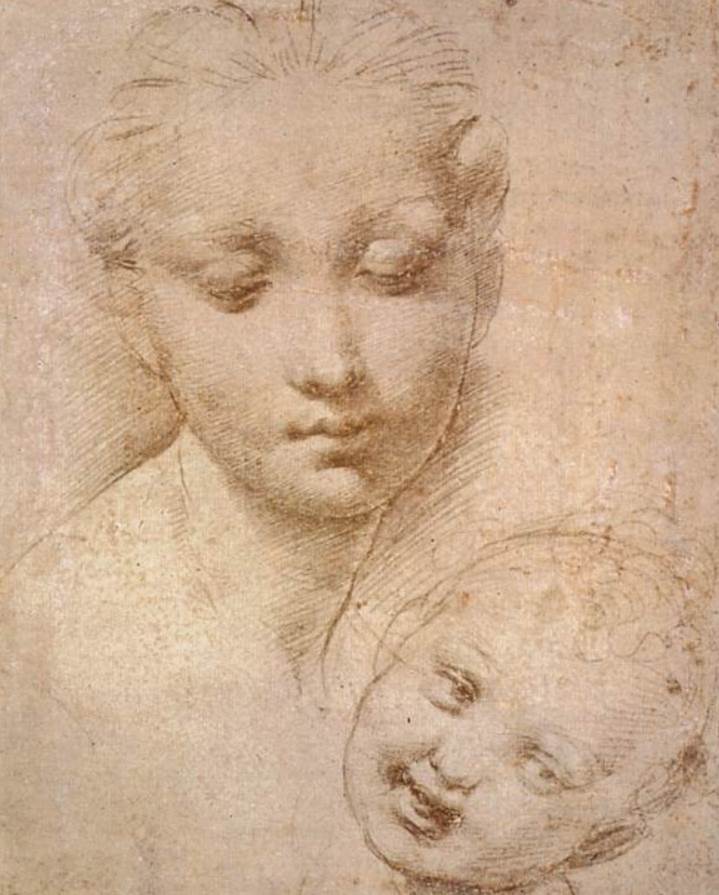
5. Study of Adam – Michelangelo
- Date created: 1510
- Dimensions: 19.3 x 25.9 centimeters (7.59 x 10.19 inches)
The Study of a Reclining Male Nude by Michelangelo might look familiar, and that’s because it’s the preparatory drawing of one of the most famous paintings ever produced. Yes, this is the Study of Adam, the main figure in “The Creation of Adam.”
This fresco is one of the paintings that completely cover the ceiling of the Sistine Chapel in Vatican City. It’s considered to be an iconic work of art and one of the most reproduced images in history.
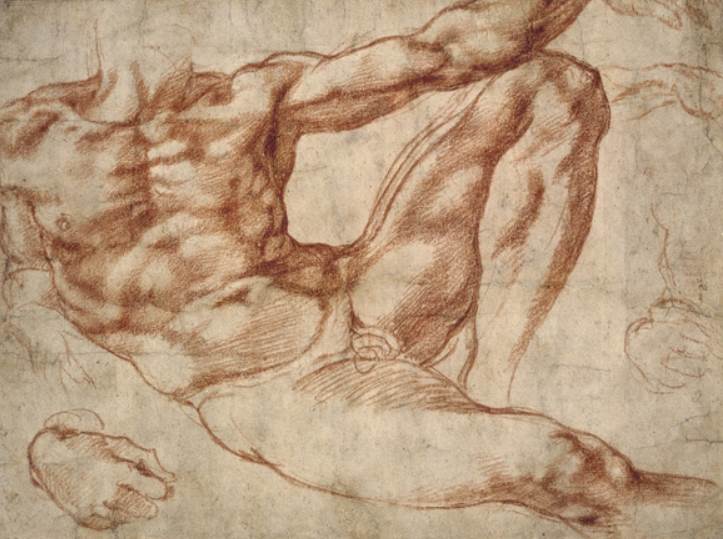
6. Landscape with a Woodland Pool – Albrecht Dürer
- Date created: 1497
- Dimensions: 26.2 x 36.5 centimeters (10.31 x 14.37 inches)
Albrecht Dürer (1471-1528) was a German artist and one of the leading figures of the Northern Renaissance during the late 15th and early 16th centuries. He often traveled to Italy and met many of the leading figures of the High Renaissance, including Raphael and Leonardo da Vinci.
He produced few landscapes and this drawing is a remarkable work of art in his oeuvre. The pine trees and sandy soil are reminiscent of the landscape around his native city of Nuremberg. The lake is probably the Weißensee in the Erlenstegener forest, just east of the city.
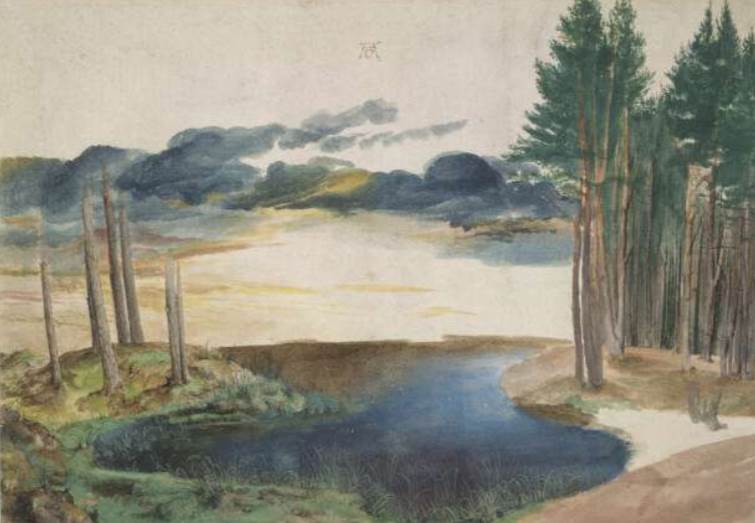
7. Portrait of Anne Boleyn – Hans Holbein the Younger
- Date created: 1532-1535
- Dimensions:
The inscription on the drawing known today as the Portrait of Anne Boleyn reads “Queen of England, 2nd wife of Henry VIII, mother of Queen Elizabeth, was beheaded in London on 19 May 1536.” This makes us assume that this is a drawing of the English queen.
Hans Holbein the Younger (1497-1543) was a Swiss-German artist who became the court painter of Henry VIII of England in 1535. In that respect, it’s possible that he indeed managed to draw and paint the English Queen, although this remains unverified today.

8. Drawing of Isabella Brant – Peter Paul Rubens
- Date created: 1621
- Dimensions: 38.1 x 29.4 centimeters (15 x 11.5 inches)
The Drawing of Isabella Brant depicts the first wife of Flemish artist Peter Paul Rubens (1577-1640). The Baroque master subsequently painted his wife in the early 1620s. The couple was already married in 1609, shortly after Rubens returned from his extended stay in Italy.
The Baroque master had painted his lovely wife before as well in a portrait featuring himself called “The Honeysuckle Bower” (1609). Isabella passed away just a few years after this drawing was completed in 1626 from a plague epidemic. Rubens married her 16-year-old niece just a few years later in 1630.

9. Self-portrait leaning on a stone sill – Rembrandt van Rijn
- Date created: 1638
- Dimensions: 20.5 x 16.4 centimeters (8.07 x 6.45 inches)
The self-portrait leaning on a stone sill is an etching by Dutch master Rembrandt van Rijn (1606-1669). It depicts the artist wearing a Renaissance-style costume. This is most probably a reference to the artists who inspired him at the time such as Raphael and Titian.
The most reasonable explanation as to why he depicted himself in such a manner is to emphasize the fact that he achieved the same level of mastery than these Italian artists. Although Rembrandt’s paintings are what made him famous, he is still considered to be one of the most successful etchers in history.

10. London from Hampstead Heath in a Storm – John Constable
- Date created: 1831
- Dimensions: 19.7 x 32 centimeters (7.75 x 12.59 inches)
John Constable (1776-1837) was one of the leading landscape painters of the Romantic era. He was born in Suffolk and became famous for painting the area around Dedham Vale, a region now referred to as “Constable Country.”
London from Hampstead Heath in a Storm depicts a hazy view of London seen from a window of his house in Hampstead. This residential area in the northwest of London has become a London suburb today.
